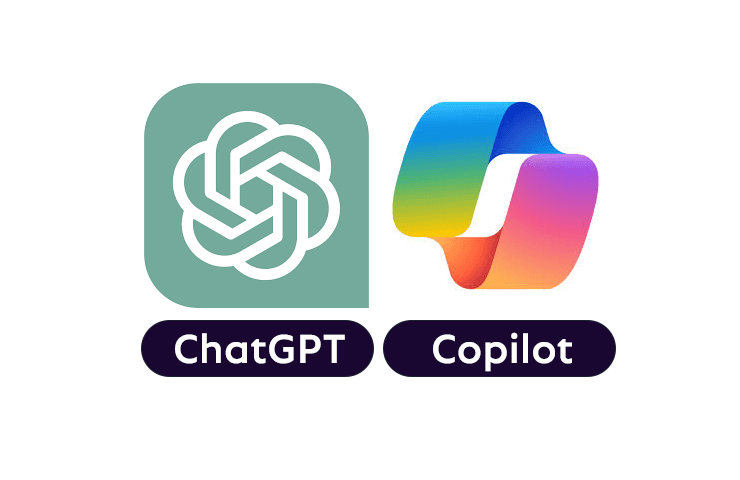
“Hang on, I’ll just ask ChatGPT …”
“So, Copilot says that …”
Have you noticed that we don’t really “google” anymore? Instead, we ask ChatGPT. On one hand, that’s great because we get a nicely worded answer. But on the other hand, it also means we stop questioning the sources behind the information.
Back in the day, when we googled something, we’d scroll through the results list (the sources) before clicking on a website. Today? I just ask ChatGPT — sources don’t matter anymore.
And why do I call this “Death by prompt”? Maybe you know the term “Death by PowerPoint.” It describes a presentation so boring that it puts the audience to sleep. You lose attention and critical distance. It’s the same with those comfy, polished AI answers.
But there’s something else we’re losing — something really important: the sense of consequences. When it comes to sustainability, AI is often completely ignored. At least, so far.
The dark side of our new artificial world
Both issues are connected to the point where we stop thinking about the bigger picture — neither about the prerequisites of AI nor about its consequences.
Honestly, I catch myself sometimes accepting AI answers as correct without really checking the sources. Sometimes it’s because I’m in a rush, sometimes just out of convenience. And sometimes, I just don’t care. The answer sounds okay. It seems right. The AI creators must know what they’re doing, right?
That’s one thing I find worrying (when I think about it). The other is the CO₂ footprint.
We need to talk about this
Did you know that each ChatGPT query uses ten times as much energy as a Google search? That’s what a recent BestBrokers study found. One ChatGPT request reportedly consumes 2.9 watt-hours, compared to just 0.3 Wh for Google.
BestBrokers estimates that the annual electricity needed for ChatGPT could charge all electric cars in the US four times over. Or power all of Australia for 1.5 days … as of today!
But it’s not just about electricity. The servers running ChatGPT and similar models also need cooling — with water.
The Washington Post, in collaboration with the University of California, calculated how much water it takes to generate a 100-word email from a GPT-4 chatbot: depending on the data center, it’s between 0.5 and 1.5 liters of water. Per email!
Okay, so AI chatbots like ChatGPT consume a lot of water and electricity. But what does it mean for us? Should we stop using AI altogether and just google? No, that’s not really an option.
First, we need to fully understand the environmental impact: According to McKinsey, the energy consumption of data centers in Europe could rise to over 150 TWh by 2030 — about five percent of Europe’s total electricity use.
Since much of that electricity still comes from nuclear and coal plants, it’s clear: we need to use AI more consciously, and smarter.
Responsible use of AI
There’s currently a trend where people create AI action figures of themselves with ChatGPT — which is actually a lot of fun. Even though I work professionally with AI, it took me five tries to get a decent result. Five prompts, five liters of water.
I work in Sweden. Around Kristianstad, we’re already facing water shortages before Midsummer, with public watering bans — and I’m using 5 liters of water just to create a superhero version of myself with AI. Not exactly heroic, I’d say.
But the problem isn’t just personal — AI is infiltrating all areas of our lives and playing an increasingly important role in companies and their processes.
That’s why companies need to understand and report on how much resources their AI use consumes. And yes: governments should regulate this legally and incentivize sustainable AI practices
Prompts for the planet
I don’t want to spoil anyone’s fun, but everyone can do something. And it all starts with how we prompt AI. Here are four simple tips to save water, energy — and nerves:
1. Be precise
The quality of your AI results depends heavily on your prompt. The more precise, the better. But that also means: you need to know what you want before you ask!
Example from a business context:
- Poor prompt: “Create a marketing text for a new product.”
- Better prompt: “Create a marketing text for a new product: an AI-powered project management software for small and medium-sized businesses. Target audience: CEOs and project managers. Focus: user-friendliness, cost savings, and time management.”
2. Provide context
The AI isn't Olaf from the office next door, where you can just walk over and ask if he can whip up a product description for your new bike. The AI doesn't know you, it doesn't know your company (and it doesn't know Olaf either). So, the AI needs context.
What kind of info does it need? For example, for a new bike description:
- What’s the bike called?
- Why is it named that?
- Why was it developed?
- Who is it for?
- “Feature – Function – Benefit”: What are the bike’s qualities? What makes it better? What do buyers get out of it?
3. Play a role
Especially for comments or social media posts, “Role Prompting” works well: you tell the AI to take on a specific role:
- Time traveler
- Expert in […]
- A particular person
- Pro and con perspectives
4. Dear Mrs. ChatGPT
Politeness isn’t just nicer — it can also make you more successful. But don’t overdo it:
- Please and thank you? — Not necessary.
- Capitalization? — Doesn’t matter.
- Typos? — Don't matter either. If you still understand it yourself, that is ;-)
Just don't insult the AI, and you're good. Remember: it has no feelings. It’s just a tool. You don’t thank your hammer after hammering in a nail, do you?
A simple “please” or “thank you” can boost ChatGPT's energy consumption by up to 20 percent per prompt.
The bottom line
Better prompts mean fewer requests and less resource consumption. Less is more!
Especially companies have a responsibility here: by training their employees in responsible AI use and raising awareness of environmental impacts, they can foster a culture where generative AI is used efficiently and sustainably.
By the way: this article was 100% human-generated — yep, by me. Still got it, right? :-)
More similar blogposts:
Found what you were looking for?
Start your intelligent search now






